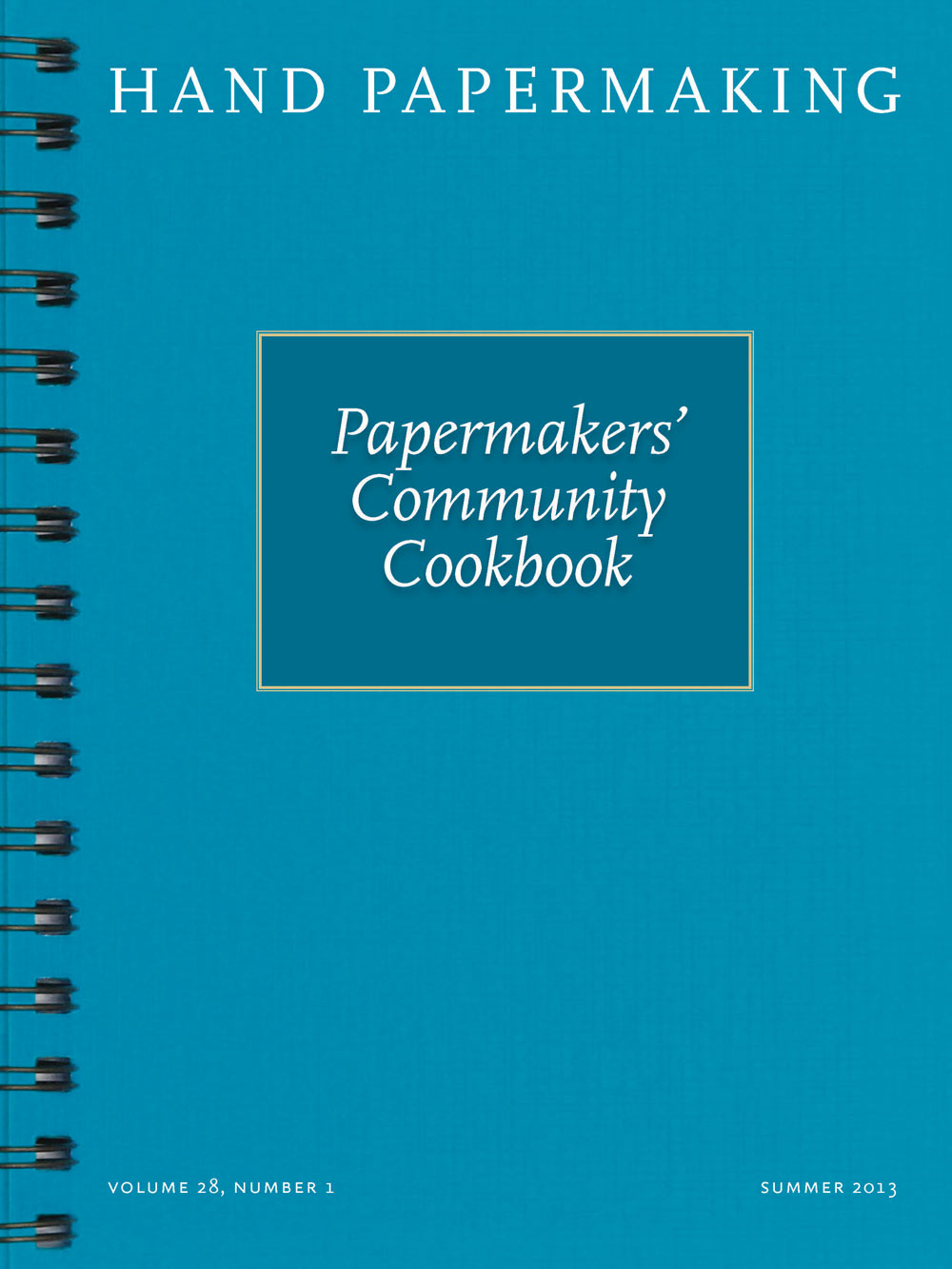
Summer 2013
:
Volume
28
, Number
1
Susan Gosin received her MFA in 1976 from the University of Wisconsin, Madison after studying with Walter Hamady in the book arts and Warrington Colescott in intaglio. Shortly afterwards she cofounded Dieu Donné Press and Paper in New York City. For more than 35 years, Gosin has collaborated with artists and writers as designer and publisher of two- and three-dimensional art and limited editions of artist books, which have been exhibited and collected by such institutions as The Metropolitan Museum of Art, New York; The Library of Congress, Washington, DC; and The American Cultural Center, Tel Aviv, Israel. She has been awarded grants from The National Endowment for the Arts and The Tiffany Foundation, and in 2006 received the Printmaker Emeritus Award from the Southern Graphics Council. Gosin teaches and lectures internationally on hand papermaking for university programs and art centers, and researches and writes on the development of contemporary hand papermaking for magazines and journals such as Art On Paper and Hand Papermaking. Currently Gosin publishes new work as president of Dieu Donné Press and serves as board co-chair of Dieu Donné Papermill. Though I love making watermarked sheets with different kinds of "longish" fibers such as kozo or abaca, the pulp I find best suited for chiaroscuro or light-and-shade watermarks is finely beaten 100-percent cotton. The trick to getting super-fine definition in a chiaroscuro watermark lies in the combination of the fineness of the wire mesh of the watermark device and the fineness of the cotton pulp.





